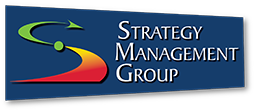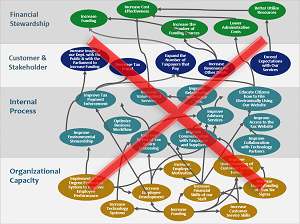 Over the last 10 years we have seen a tremendous change in the healthcare industry. Whether it is a shift in philosophy to focus on more value-based care or navigating the impact of implementing the Affordable Care Act here in the United States, significant shifts and changes have occurred and are occurring every day. Given the relative unpredictability of how the healthcare market will change, is there really any use for those in the industry to go through a strategic planning initiative? The answer is of course yes, but the real question is “how?”
Over the last 10 years we have seen a tremendous change in the healthcare industry. Whether it is a shift in philosophy to focus on more value-based care or navigating the impact of implementing the Affordable Care Act here in the United States, significant shifts and changes have occurred and are occurring every day. Given the relative unpredictability of how the healthcare market will change, is there really any use for those in the industry to go through a strategic planning initiative? The answer is of course yes, but the real question is “how?”
To be successful in the future, no matter how turbulent the path forward may be, organizations need to create a vision based on the best future assumptions they can identify. With any strategic planning effort is it really important to have at its foundation key assumptions about how the world will be different. Organizations then can describe what they need to look like given those future assumptions, and then design a strategy to help them bridge the gap between where they are today and achieving that future success. But if all our assumptions of the future are up in the air, then how can we really build a strategy effectively?
I would argue that in industries that are experiencing a lot of change it is even more important to be strategic! Yes, there are many unknowns given the relative volatility of the US political landscape as it pertains to healthcare. But there are some key assumptions that can be made that are relative certainties regardless of any potential future political or regulatory shifts? If we can identify those “most probable” assumptions in the healthcare industry or in our particular marketplace, then it would be worth our time to identify them and begin building our response strategies accordingly. I would like to present the follow set of ideas as examples of assumptions that most participants in the healthcare sector need to consider over the next five years and could be the basis for strategic discussion. These are not meant to be all inclusive, but merely to demonstrate that there are fundamental assumptions that can be identified even in a marketplace where significant uncertainty exists.
The need to provide ever increasing quality patient care will continue. The focus over the next five years will continue to be on delivering highly impactful, cost-effective healthcare. Whether it is driven by key stakeholder requirements or customer expectations, we know that successful players in the healthcare industry will be those that can generate healthy outcomes for their patients. Fundamentally having strategies built around improved effectiveness and efficiency in delivering quality patient care will be a fundamental requirement in the future. No real surprises but any strategic discussion in the healthcare sector must begin with patient care! The point is that the ability to differentiate regarding healthcare outcomes will be the bases for any future success in the industry.
Changing in customer volume and demographics will continue. The fact is that the US population is going to continue to grow over the next five years. In May of 2017, the US passed the 325 million mark and is expected to be over 332 million by 2020 (US Census data). That means essentially there will be more people needing care in the future with some healthcare markets seeing fairly dramatic increases in patient populations. We have seen a significant impact in demographic shifts in the US over the last five years and this trend will continue over the next five years as the increases in Hispanic and Asian demographic groups continues at a high rate. How will these assumptions impact capacity requirements or service delivery requirements within the healthcare sector?
Labor supply changes. The US has seen labor supply grow by 2.6 percent per year over the last decade, but that trend will not continue. Rand researchers (Karoly & Panis, 2004) have postulated that the growth of labor supply will only be around .04 percent over the next decade and will be even smaller the following decade. Also, while the trend has been a more aging workforce over the last 20 years this will also change with the workforce being more evenly balanced across age groups in the future. How will this impact the availability of skill workers and experience levels in the healthcare industry? What does this mean for how we need to recruit and retain of workforce?
Continued increase on wellness and prevention. Significant increase in innovation with regard to nutrition for example will be driven by increase consumer demand for wellness. Patients are sharing that they want advice on weight management and diet therapies (PwC Health Research Institute, 2016) for example leading to increased focus on these services within the industry. Smoking cessation and fitness programs are other programs that are already tied to health outcomes and will continue to be important in the future. How will this trend impact the future services healthcare practitioners will provide? Or the information they make available to their patients?
Emerging technologies in the healthcare marketplace. PWC reports that “the US health industry lags behind other industries, such as retail and telecommunications, in deploying emerging technologies, including artificial intelligence, drones and virtual reality but that this trend is about to change.” (PwC Health Research Institute, 2016). Accenture reports that “the global healthcare industry in the year 2020 will be a highly connected environment powered by large data networks, cloud computing, and mobile devices. There will be widespread increases in the number of connected healthcare networks providing seamless integration between care providers, patients, pharmaceutical companies, health insurers, and other invested parties anywhere in the world. Care within this model will become more patient-centric, less expensive to provide, and more innovative.” (Meissner, 2013). These assumptions would call for a need to invest in breakthrough technologies that impact how patient care is provided and operational business processes are managed moving forward. This will also impact the types of skills needed in the future within the industry.
Rising operating costs driven by government regulations and expanded capacity requirements will impact the financial viability of healthcare systems (Jonash & Ronanki, 2015). Healthcare CEO’s and COO’s must find innovative was to drive revenue and decrease costs. How will rising costs impact the future viability of healthcare providers? How must they change how they do business? In what areas must they innovate to reduce costs?
I share these discussion points as merely a sampling of assumptions that could be discussed by healthcare industry players in formulating their 3-5-year strategies. With proper research conducted, there are dozens of additional assumptions that we could discuss to really understand the future of the healthcare industry. I provide these few ideas as evidence that even in an industry that is experiencing rapid, constant change, there is a need to really understand how the world will be different in the future. To do so, we must first understand what assumptions can be made and set out to use a strategic planning framework to understand how our healthcare organization must transform in the future in the face of those assumptions. Once we are able to articulate that future successful state, we can then work to understand what must be accomplished to get from where we are today to achieving the needed transformation that must take place in the next few years – our strategy becomes the path and the plan to future success.
Sources:
Jonash, Ben & Rajeev Ronanki (2015). The convergence of health care trends: Innovation strategies for emerging opportunities. Retrieved from: https://www2.deloitte.com/us/en/pages/life-sciences-and-health-care/articles/convergence-health-care-trends.html?id=us::3bi:confidence:eng:cons::::qQmDoWY2::77378163007585:bb:::nb
Karoly, Lynn A. and Constantijn (Stan) Panis (2004). The Future at Work: Trends and Implications. Retrieved from: https://www.rand.org/pubs/research_briefs/RB5070.html
Meissner, Armin (2013). The Global Healthcare Industry in the Year 2020. Retrieved from: https://www.mddionline.com/global-healthcare-industry-year-2020.
PwC Health Research Institute (2016). Top health industry issues of 2017: A year of uncertainty and opportunity. Retrieved from: https://www.pwc.com/us/en/health-industries/pdf/pwc-hri-top-healthcare-issues-2017.pdf
U.S. Census Bureau (n.d.). Retrieved from: https://www.census.gov/2020census

 My father gave me an important piece of advice once that I will always remember. “Always have the right tool for the job!” Of course, I had to re-learn that lesson through the years a few times, but it really is good advice. Most things that I have been successful at in my life have been because I did it the right way and using the right tools. In the military they teach us to follow the process and meet the standards. Of course, there are exceptions to any rule, but generally there are proven approaches available that help guide us to effectively and efficiently accomplishing what we undertake.
My father gave me an important piece of advice once that I will always remember. “Always have the right tool for the job!” Of course, I had to re-learn that lesson through the years a few times, but it really is good advice. Most things that I have been successful at in my life have been because I did it the right way and using the right tools. In the military they teach us to follow the process and meet the standards. Of course, there are exceptions to any rule, but generally there are proven approaches available that help guide us to effectively and efficiently accomplishing what we undertake.



 One of our clients decided to build their strategy map and balanced scorecard themselves after some training. They created a draft strategy map with 12 strategic objectives, linked together in a cause-effect chain–the strategy map–that showed how value was being created for their customers and the owners of the business. A few months after the training, the number went from 12 objectives to 32. Why? – a lack of discipline around the strategy development process and a feeling by a few folks who did not attend training that “more is better”.
One of our clients decided to build their strategy map and balanced scorecard themselves after some training. They created a draft strategy map with 12 strategic objectives, linked together in a cause-effect chain–the strategy map–that showed how value was being created for their customers and the owners of the business. A few months after the training, the number went from 12 objectives to 32. Why? – a lack of discipline around the strategy development process and a feeling by a few folks who did not attend training that “more is better”.




